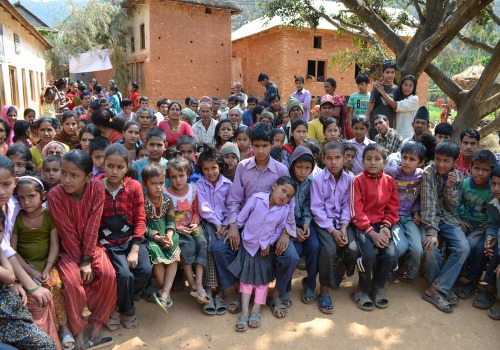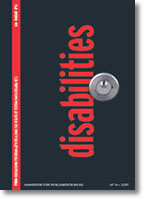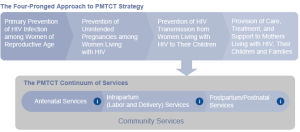This is a commentary in response to The Lancet’s Editor Dr. Richard Horton’s commentary article dated 3/3/12, on his concerns about CDC resource duplication and mis-management. Though we are not with the CDC nor have any inside or detailed information, can comment on the US Federal Appropriations system and how federal funds are managed through multiple Federal programs directly connected with Global Health:
It’s not that “there is something wrong in Atlanta”, per Richard Horton’s very valid concern in his commentary, posted at the bottom, but what is wrong is the entire pipeline of legislative authority and funding streams appropriated through congress and the difficulty federal agencies have in managing federal funds and the tools federal programs are given to effectively implement costly programs in the field. It is top to bottom, and between political struggles, antiquated federal systems, exporting federal activities to contractors (which provides highly trained and educated staff not always accessible within a federal agency), there is duplication, waste, and confusion. Though it is easy to see, it is not easy to change. Fundamental issues include:
- Creating a funding stream from legislative authority to Agency and Program implementation results in many political deals, delays, and waste.
- The federal government is not poised to implement programs themselves in many cases, federal funds are released to the private sector as competitive grants, contracts, and cooperative agreements.
- Processes and approval systems in federal agencies are managed at the ‘Department’ level, which means that even simple communications may have to be approved in ”Downtown DC”, even if they are in Atlanta.
- Tracking programs for comparison and quality analysis is an effort hampered by antiquated database systems and policies that differ between Agencies and Departments, which cause gaps in communication, barriers in collaboration, and reduce the ability to understand how programs are similar.
- Innovation is on the horizon but will take time and global support.
Federal Congressional Process
The traditional process holds many systems in place that causes barriers to efficient implementation. Once a bill is legislated into law, written by lawyers, lobbyists, and legal aids, instead of public health scientists and medical officials, the agencies then battle over who receives the funding. This happens at a very high level, above the bureau and agency located within the department which actually receives appropriated the funds.
Abridged version of a bill funding federal programs:
Bill drafted by Congress => Committee => Congress vote (Senate and House) => conference resolving differences between Senate and House => President Signs (i.e. Affordable Care Act) => law
The appropriations committee inserts final wording and monetary details (i.e. how much funding this project will receive) –including all the extra projects (ear marks) tacked on to the bill that passes. This is also where many of the requirements for the funding stream are inserted, which results in a program plan that will be required to be implemented by the grantee/contractor who ultimately receives the funds.
Once a law is signed and funded to a department, the funds follow this stream:
= > Federal Department (i.e., HHS) => Agencies may lobby over who receives the funds, inside meetings are held, however the legislation itself can also assign the funds to a particular agency => Assigned Agency (CDC) => Bureau/Division (i.e., Office of Global Health) => existing program administration or new staff is hired to manage the program.
Federal Administration
The federal administration process of a program holds many keys to how a program ultimately is implemented in the field but federal staff have no control over timelines or who is actually awarded a contract or grant. Therefore they have to work with the project they are handed and the administrative tools the government has provided.
After funds are allocated to the Department and Bureau, the Division within the Bureau tasked with hiring new staff to manage/implement the program. They often times also assigns existing staff to manage the project. This may cause some delay but eventually, Requests for Proposals (RFAs) are written. They are written by federal staff who may or may not always have extensive experience writing or implementing that type of program. This is a critical turning point because the way the RFA is written will significantly impact the way proposals are written and submitted for competition. The primary goal of a grant writer is to respond to the RFA in the way that is requested. So, the grant writer/applicant will insert all requirements and language provided through the RFA and attached legislation. However, this is where applicants have a lot of leeway in interpretation, and when there are not enough defined details, everyone who proposes will provide a wide array of responses and the ultimate pool of candidates may ultimately contradict each other and not provide any worthwhile programs.
After the deadline passes, an “independent review committee” of experts outside the federal government is assembled and paid to review the submissions.
In response to Dr. Horton’s comment “Public health activities in various countries are contracted out to…partners who do a less than desirable job, delivering poor quality products and services thanks to minimal guidance and appropriate oversight from the CGH headquarters in Atlanta.”:
Applications are judged on their worthiness to be implemented in the field and scoring is based specifically on the requirements detailed in the RFA. Requirements not listed in the RFA but recognized by reviewers to be important may factor into scores but can ultimately be contested by the applicant. All awards and non-awards can be contested by the applicant. The federal office can not contest any scores or provide any commentary in the review system. As a result, in many instances, top scored applications, regardless of quality, will still be funded, as long as they meet the Agency’s score threshold. Awards are given out in rank order- the ‘top ten’ scores, per say.
Once funds are awarded, the administrative burden falls on the awarded organization. The organization is aware of all of the tasks and ultimate goals to be completed, but are not aware of the ongoing procedures for approval with regards to communication efforts and ongoing program details. Changes in scope of work, development of marketing plans and materials, budget allocations, drawing down funds, and duplicative reporting requirements – which is a major complaint due to overlap between Agency and Federal requirements- cause major delays (can last up to a year) and major administrative burdens on the part of the contractor/grantee. Federal policies outline that the risk and burden to fall on the shoulders of the contractor/grantee in almost all instances to reduce the risk/burden of federal tax dollars.
Grant implementation: many federal grants are managed by ‘’federal project officers’’, (POs) who are often times very educated and have considerable experience. However many have also been in the federal government for so long, they are more concerned about the required paperwork, administration and process oriented results related to deadlines and submitted reports rather than the quality of data garnered from the program. Once can also look to training, but, there is often little money allocated to training federal staff, a concern staff have raised in annual performance reviews of their work environment and can be accessed on the Office of Personel Management’s Website (OPM.gov). POs may also be overloaded with too many grants to watch over very carefully. Additionally, Grantees are not required to complete every last task their proposal states, unlike contracts. Many of Dr. Horton’s observations are identifying administrative and cultural working environmental barriers. But this is no excuse!
Lastly, it is important to consider when referring to ‘contracts’ or ‘grants’, there is also a middle ground called ‘cooperative agreements’, which blurs the lines of contracts and grants. Cooperative Agreements do not have prior-agreed upon hard ”deliverables” but receive ongoing streams of federal funds to house data, analyze data, provide technical support, manage a set of grantees, etc. As a result, the federal implementation of a program gets hampered with administrative barriers coupled with a political pull that started at levels beyond the control of any bureau within any federal agency.
Travel
Dr. Horton comments on excessive travel, which is also a valid point. Travel is very expensive, particularly international travel. Should the federal staff or contractors assigned to evaluate federal programs not visit the field program as much? Federal programs have been criticized for both not visiting their program enough, or visiting too much. More analysis is needed to define when it is appropriate to do a site visit, how long one should stay, how much staff should go, and allowable costs.
One could compare travel methodologies used for US National Health programs, where many programs are short changed and not enough funds can be dedicated to direct monitoring and evaluation, and monitoring is often times limited to phone calls and contractors providing technical assistance. Is this better? What shape is the US Health Care System in and… why?
Surprisingly, not many outside the federal government realize that Congressmen and their legislative committee staff take extensive international trips on private planes to ‘explore’ the funding need prior to any legislative authority being granted to the Department or Agency. Perhaps the waste begins there, but is carried through down to the department. However at the federal level, there are limits to spending which have become very strict, including time limits, cost limits, airline expense limits, and per diem limits which have reduced waste.
CDC
Regarding the CDC: Though they have authority and specific responsibility to effectively carry out their programs, are granted the resources and support to do so, and have strong federal leadership in place, inquiries into the quality of their results and coordination should always be an interest of the American people and a priority of the global health community. However the mismanagement and duplication that appears to be the sole responsibility of an agency, i.e. the CDC, can actually be the end result of a myriad of factors beginning with legislation and ending with the lack of collaboration and communication between Agencies within Departments competing for federal dollars.
Examining Duplication
If one wants to examine the duplication of US Federal Global Health programs, one will have to compare the Global Health Programs through the National Institutes of Health (NIH), the Office of Global Health at HHS housed at the Health Services and Resources Administration (HRSA), programs funded through the Maternal and Child Health Bureau (HRSA) and other programs at HHS and Federal Departments. The other component that adds to complication is the fact that the CDC is housed the Department of Health and Human Services while USAID is housed through the Department of State, which adds to politicking at the congressional level.
Regarding actually running analyses: Agency databases housing contracts and grants are separate, disjointed, and difficult to search through. Databases for Contracts and Grants and Cooperative Agreements are all housed separately different systems built by different contractors and being updated at different points in time, with different funding streams.
Can the Global Community Spur US Federal Innovation and Change?
Richard Horton’s concern is a very valid one that has echoed the halls of many federal programs and those outside in the private sector. One would hope that The Lancet’s call for coordination can bring more focused attention to this issue. Global health is a topic and funding stream that hits many programs across federal bureaus and we fully agree that a more concentrated approach to collaboration and reduction of duplication is essential to achieve quality and measurable results for global health outcomes.
****************************************************
The Lancet, Volume 379, Issue 9818, Page 788, 3 March 2012
doi:10.1016/S0140-6736(12)60318-3Cite or Link Using DOI
Lancet Article Link: http://www.thelancet.com/journals/lancet/article/PIIS0140-6736(12)60318-3/fulltext?rss=yes
Offline: Is CDC a science-based organisation?
Richard Horton
When we published our first report describing discontent about the work of the Center for Global Health (CGH) at the US Centers for Disease Control and Prevention, CDC immediately contacted us to ask for an opportunity to reply. We agreed and await their response. Meanwhile, two further letters have arrived. They again signal severe concerns about the way in which CDC organises its global health work. Both correspondents are well informed about the details of the CDC’s work in global health. Their allegations are serious. They raise questions about leadership, management of resources, proper use of the CDC’s authority and power, and the scientific rigour of CDC research. They also claim that CDC’s CGH encourages a culture that censors and punishes dissent. Here is some more of what they have to say. “CDC is no longer a science-based organization…Skills, training, and experience are secondary when making important decisions.” “Public health activities in various countries are contracted out to…partners who do a less than desirable job, delivering poor quality products and services thanks to minimal guidance and appropriate oversight from the CGH headquarters in Atlanta.” “There is duplication of efforts, not to mention huge amounts of tension and confusion at the organizational and interagency levels…there is no coordination between the two important US Government agencies responsible for global health work. In fact, it is a well-known fact in the global health field that CDC and USAID have been long-time archrivals and this rivalry causes a lot of tension affecting global health work negatively. Most people heard or witnessed, in countries where both organizations have country offices, that things cannot get done…If these two large and powerful US Government organizations cannot get along enough so that they get the job done, how can CDC’s CGH expect to coordinate global health efforts with the other agencies and organizations worldwide?” “I, and obviously several other colleagues, believe that the time has come to keep our scientists and the management of CDC-CGH honest.” “There is no strategic direction…at the CGH other than spending monies at lightning speed. An objective evaluation of this center and its activities is long overdue. In fact, an in-depth congressional investigation might be in order.” “Monies are wasted on extensive overseas travel and long temporary duty assignments…We never hear what these people accomplish during their long overseas assignments.” “Most employees see the monetary waste…but they cannot talk for fear of losing their jobs. Staff morale is quite low at CGH as a result of poor handling of global projects, inappropriate utilization of the workforce and funds.” Something is clearly wrong in Atlanta.














